Introduction to Mandala Art
Hi friends, Adrienne from @studio80design here to share all my tips and tricks on how to draw mandalas! Even if you’ve never drawn a mandala before, these tips will help you get started!
A mandala is a Sanskrit term meaning “circle.” It represents the universe in Hindu and Buddhist symbolism, embodying harmony, balance, and unity. Mandalas are intricate geometric designs that have been used for centuries in various spiritual traditions as tools for meditation and introspection. Engaging in mandala art can be both therapeutic and inspiring, allowing individuals to express creativity while achieving a state of mindfulness.
With that being said, I find mandalas extremely satisfying to draw and color. The geometric patterns mixed with floral-like designs are right up my alley! Today I’ll be sharing some tips and tricks for drawing mandalas!
Materials you’ll need you for Mandala Art Drawing:
- Dot Grid Notebook or graph paper
- Tombow MONO Graph Mechanical Pencil
- Tombow MONO Drawing Pens
- Helix 360 angle and circle maker
- Tombow MONO Eraser
- Compass and Protractor: Tools like the Helix 360 Degree Angle and Circle Maker assist in creating precise circles and angles.
- Ruler: For drawing straight lines and ensuring accurate measurements.
Tips to Use Before You Start
Tip 1: Sketch in Pencil First
Whether you’re a beginner at drawing mandalas or not, I always recommend sketching in pencil FIRST! There are many lines, angles and patterns in mandalas, so it’s important to get the blueprint of your mandala before you start inking it in!
Tip 2: Use a Compass for Precision
My favorite tool to use to create my guidelines is the Helix 360 Degree Angle and Circle Maker. Not only can you draw various sizes of circles, but you can also draw in angled guidelines to divide your circle into sections. It’s small enough to use in your notebook and you can continue to add lines on the outside if you want to make it larger!
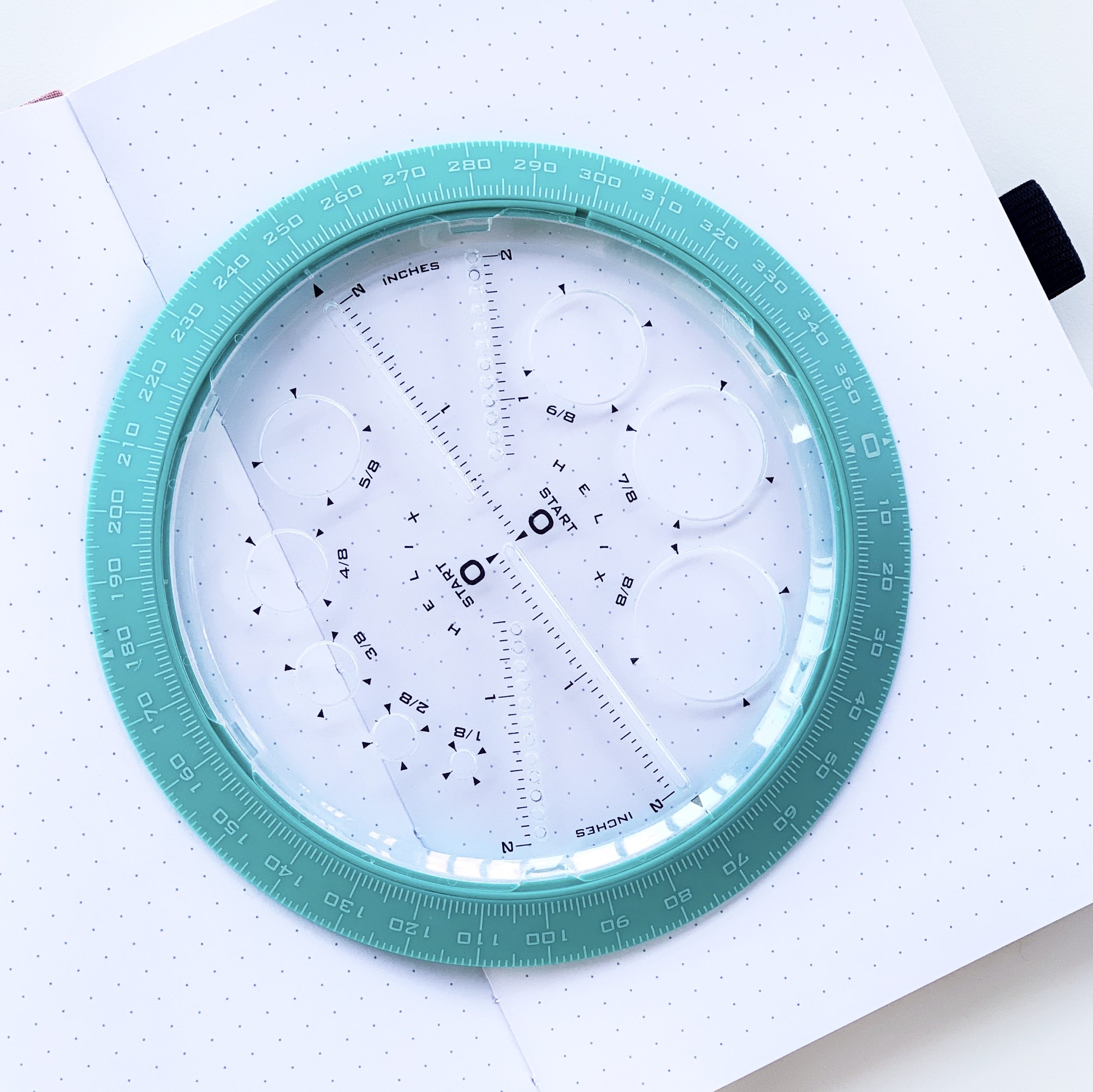
Tip 3: Practice Patterns Separately
My third tip is to practice your designs beforehand. I like to fill entire pages in my dot grid notebook with patterns and geometric lines to get an idea of what I want to draw in my mandala. It can be a little daunting staring at a blank mandala guide not knowing what to draw first. If you’ve practiced some patterns beforehand, you’ll be ready to sketch in those details!
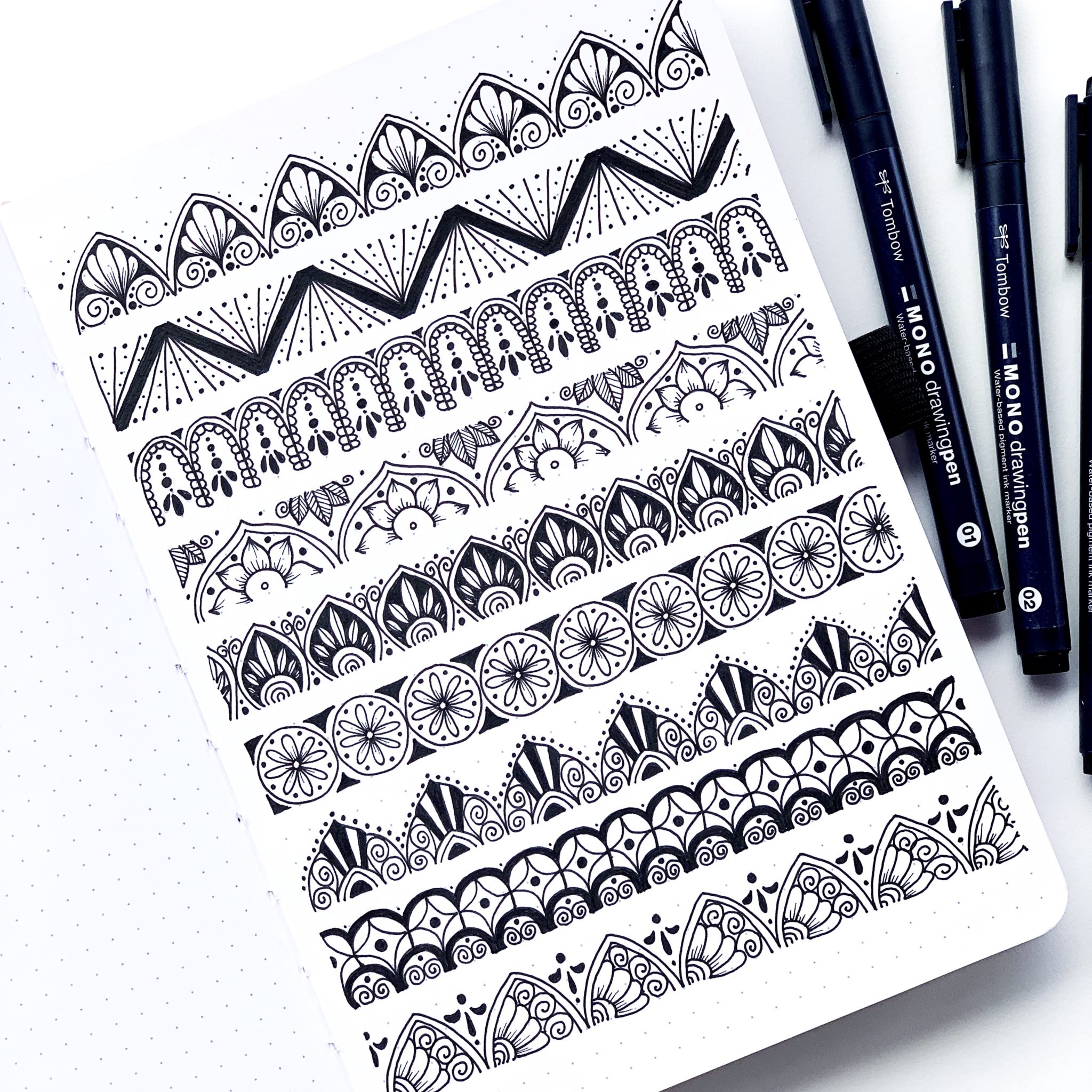
Tip 4: Start with Basic Shapes
Start with basic shapes! You’ve probably already seen examples of mandalas and thought “how in the world did they draw that?” Drawing detailed and intricate mandalas takes time and practice. Starting with basic shapes will help you get the practice time in. Try making the main petals of the mandala all the same shape, whether it’s flower petals, circle petals or another shape. Keeping it basic will help you practice filling in each of those shapes!
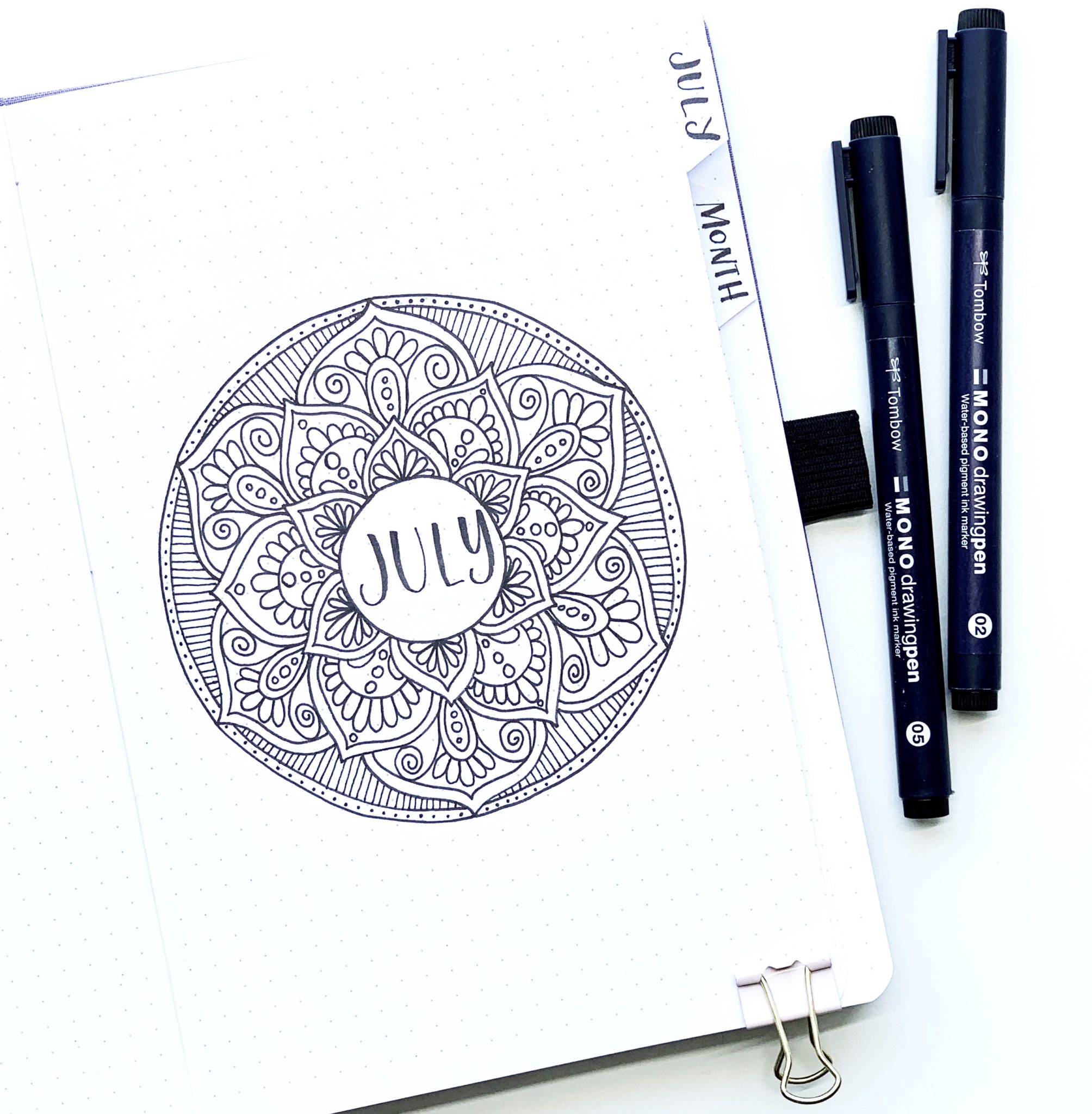
Tip 5: Utilize Negative Space
Use negative space! Darkening in areas will add depth and character to your piece! I usually add in darker areas at the very end, being mindful of where to add negative space.
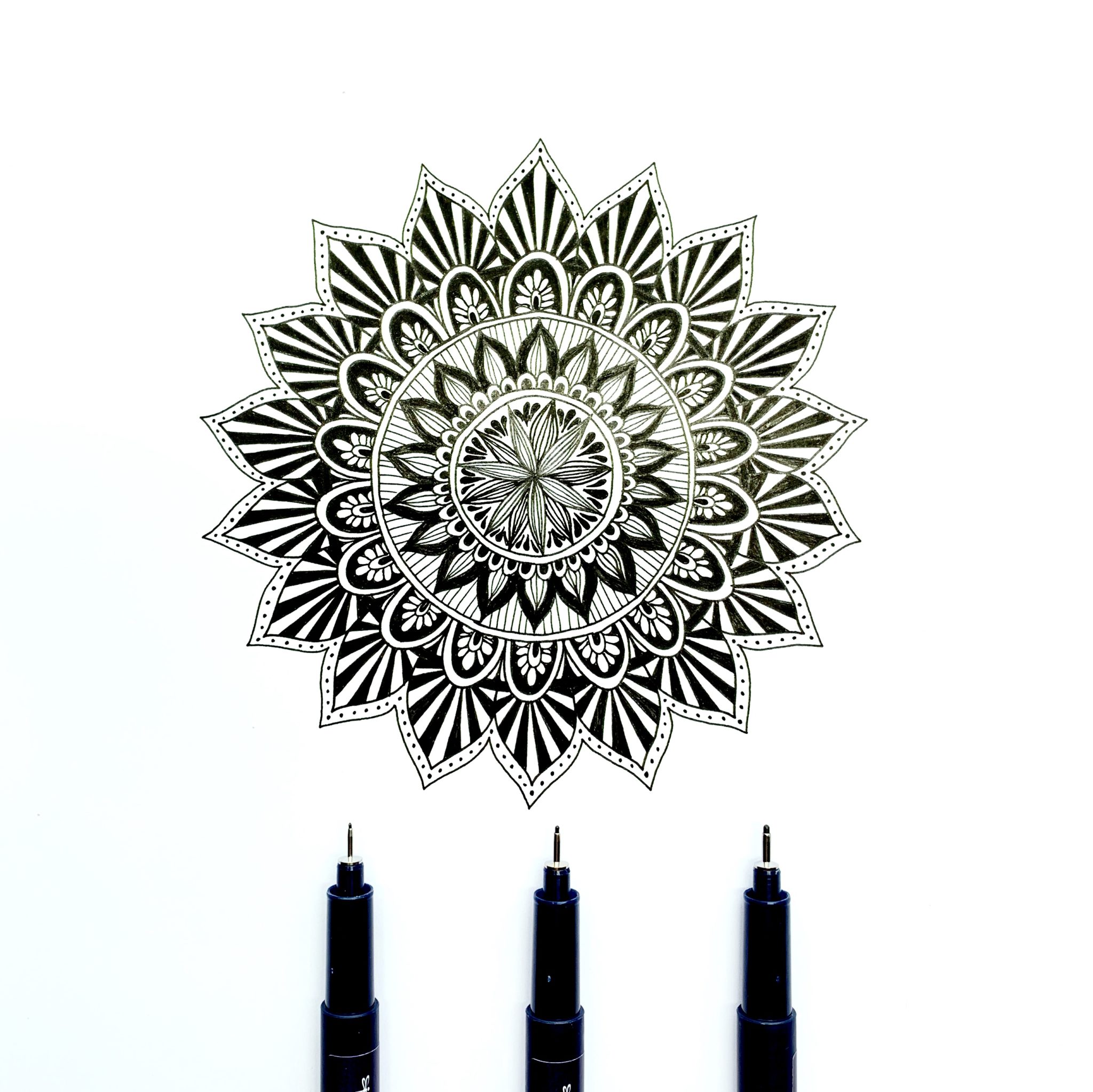
Tip 6: Experiment with Colors
Don’t be afraid to use color! Color brings life to your mandala and gives it character. Pick a color scheme or simply stick with rainbow!
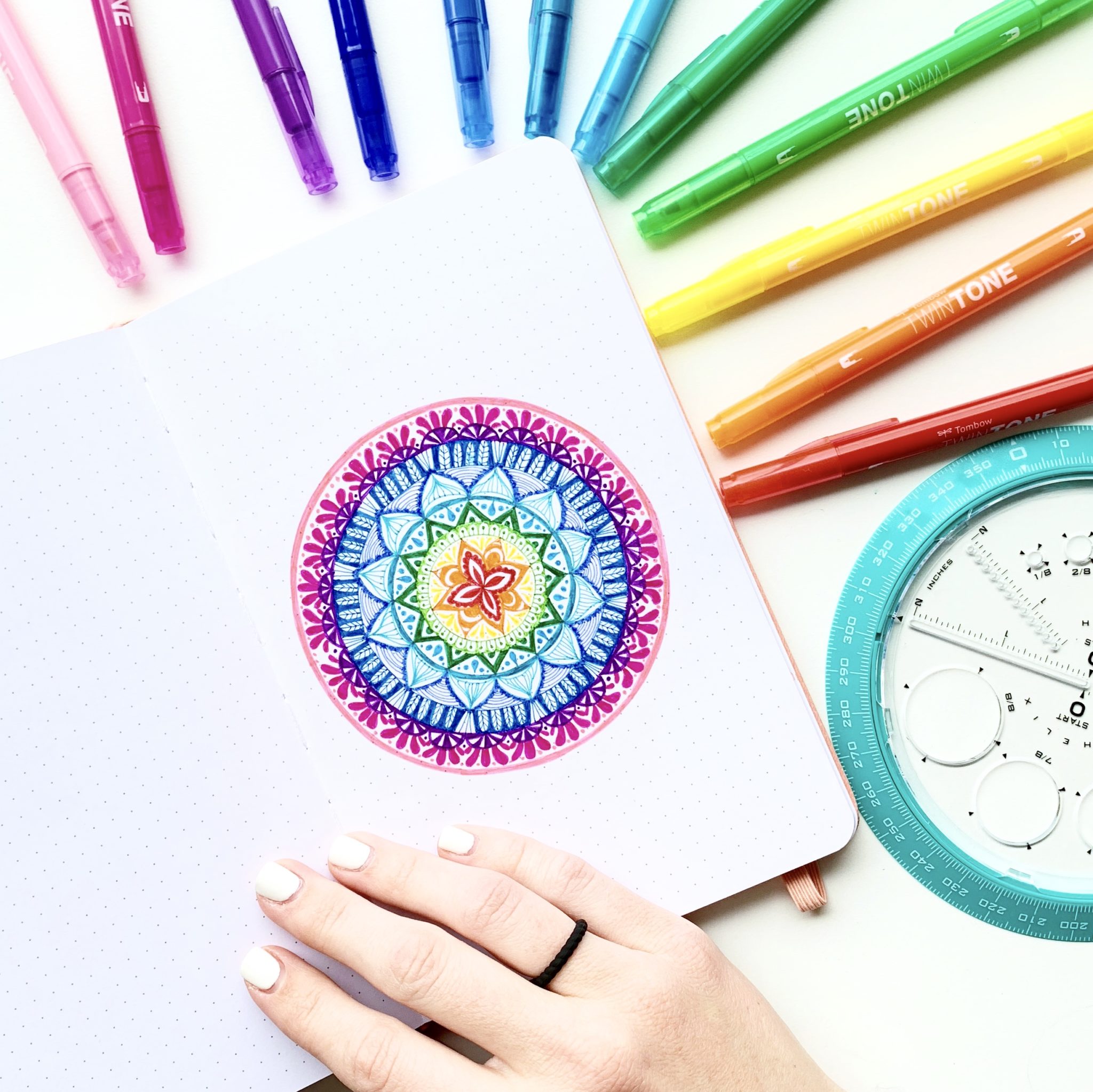
Tip 7: Meditate While Drawing
Focus on your breathing and let the process be a calming experience.
Tip 8: Explore Digital Mandalas
Use design software or drawing tablets for symmetrical precision and new artistic possibilities.
Step-by-Step Guide to Drawing a Mandala
Step 1: Setting up the Framework
- Draw the Outer Square: Begin by drawing a square on your paper to define the boundary of your mandala. The size is up to you, but a larger square allows for more intricate designs.
- Find the Center Point: Use your ruler to draw diagonal lines from each corner of the square. The intersection of these lines marks the center.
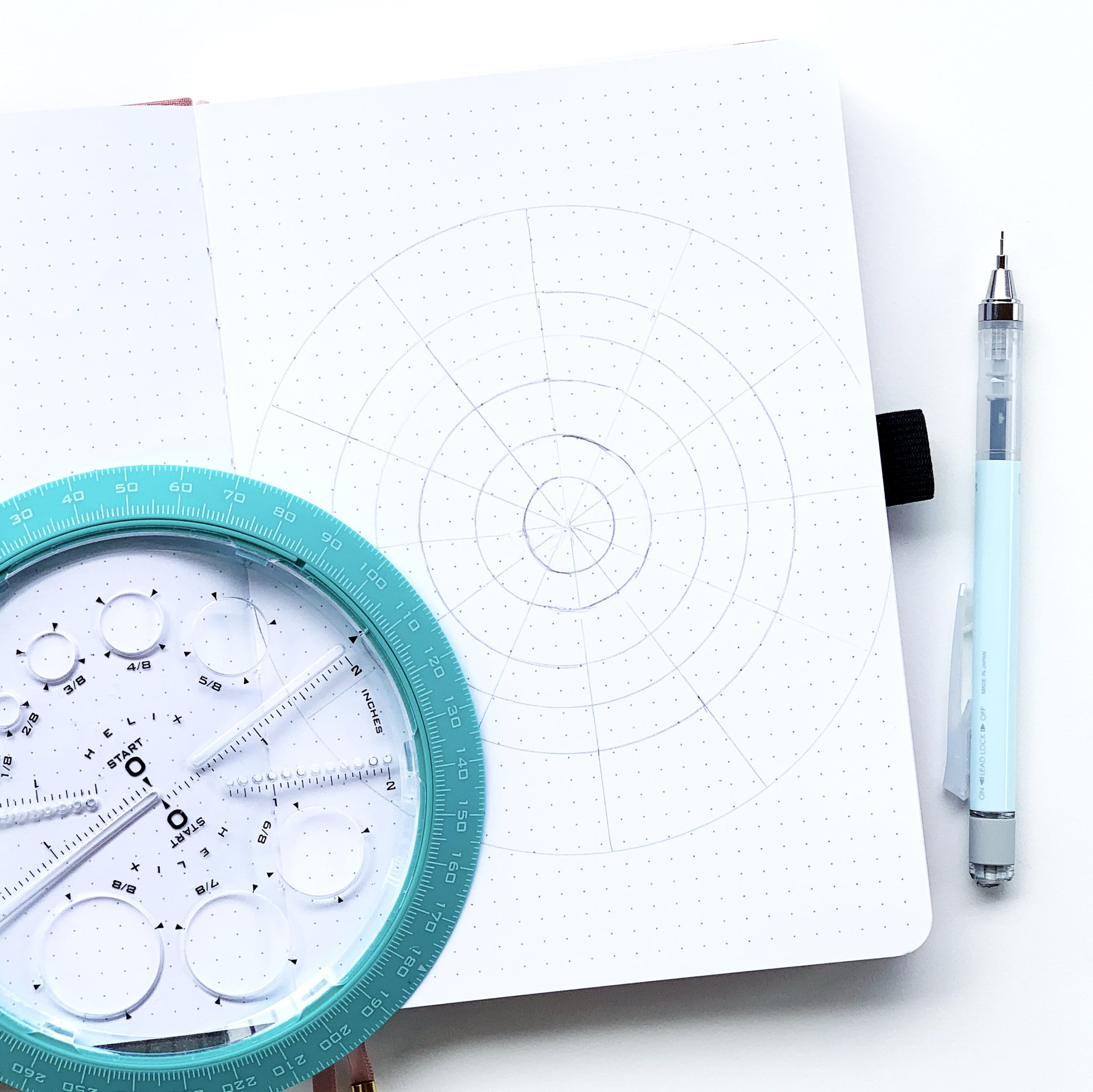
Step 2: Creating the Grid
- Draw Concentric Circles: Using your compass, draw multiple circles radiating outward from the center point. The spacing between circles can vary based on your design preference.
- Divide the Circle: Employ your protractor to divide the circle into equal segments (e.g., every 15 or 30 degrees), drawing straight lines through the center to the edge of the outermost circle. This grid will serve as a guide for placing your patterns symmetrically.
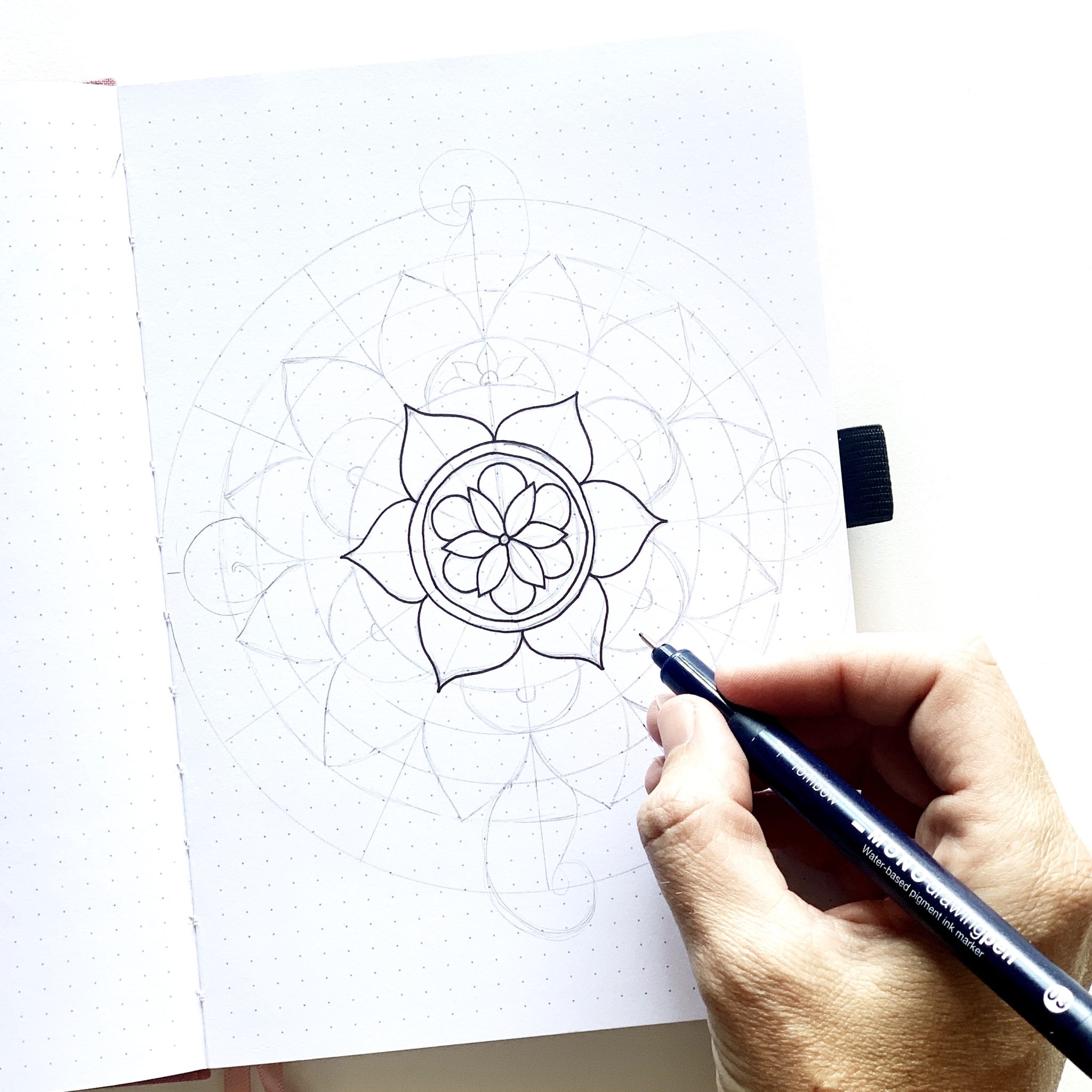
Step 3: Designing the Mandala
- Start from the Center: Begin by adding simple shapes at the center, such as a small circle or star.
- Build Outward: Continue adding patterns, moving outward along the guidelines. Utilize the intersections and spaces between the concentric circles and radial lines to place shapes like petals, leaves, or geometric forms.
- Maintain Symmetry: Ensure that each design element is repeated uniformly around the circle to maintain balance and harmony.
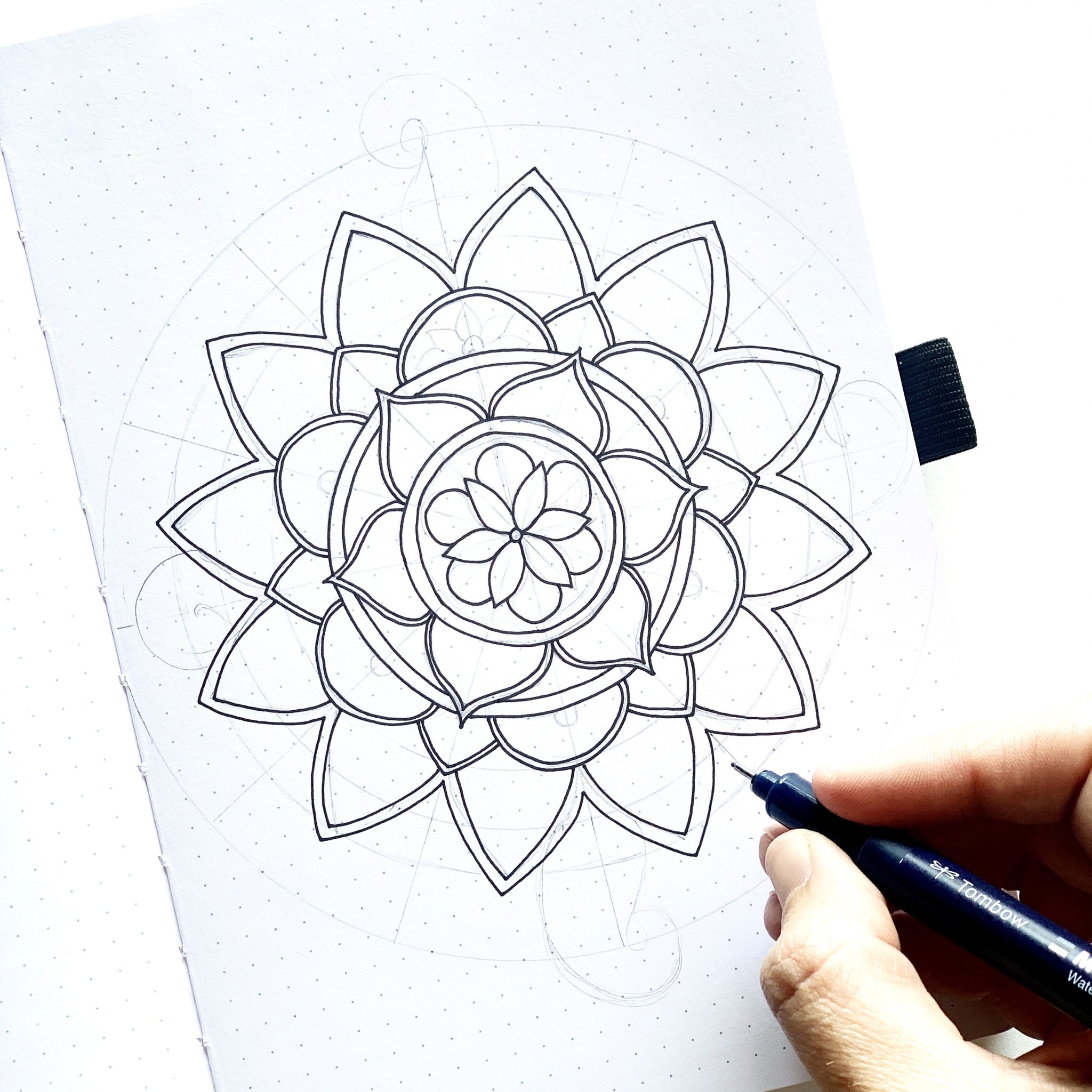
Step 4: Inking the Design
- Trace Over Pencil Lines: Once satisfied with your pencil sketch, use drawing pens to ink over the lines.
- Vary Line Weights: Employ different pen sizes to add depth and emphasis to certain areas of the design.
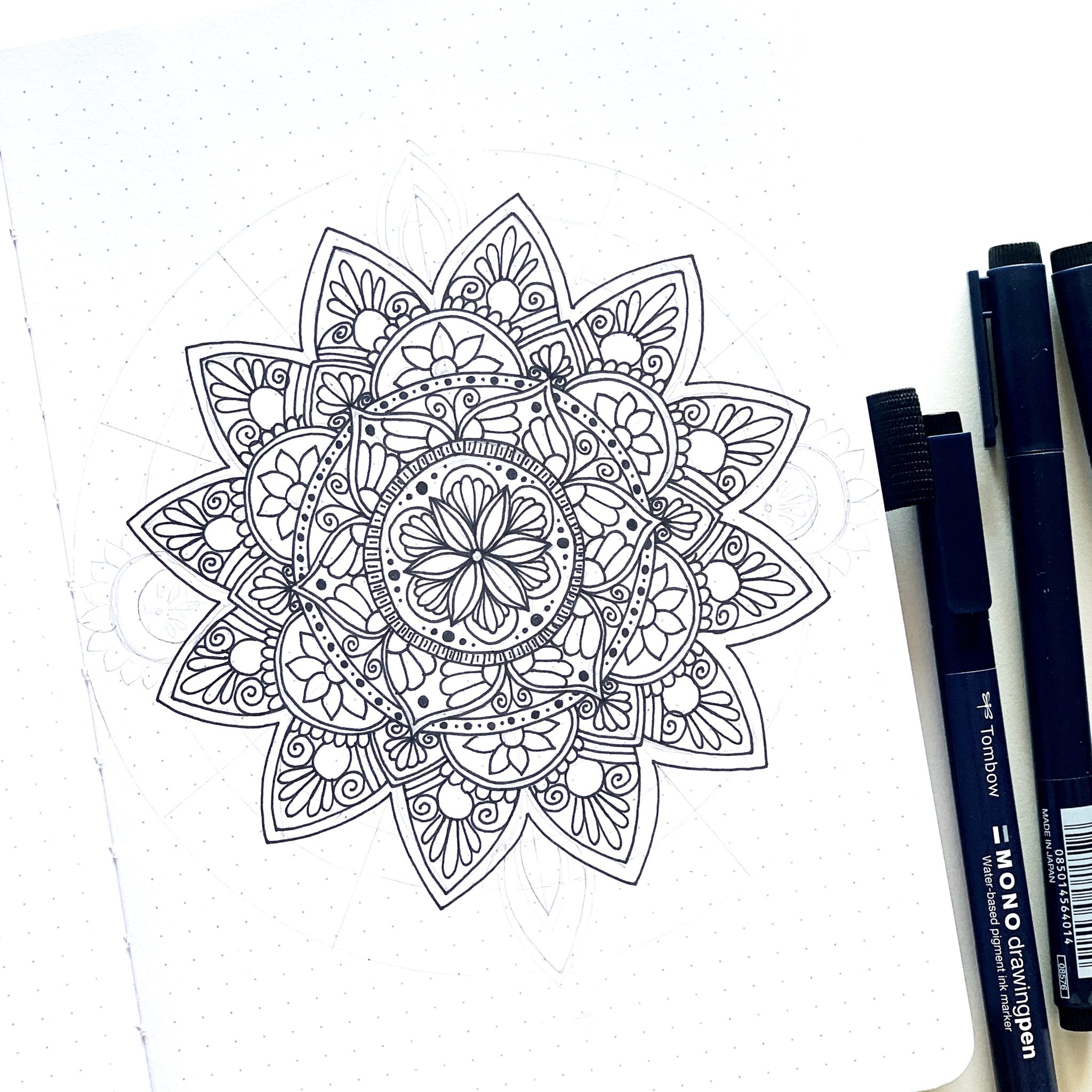
Step 5: Adding Details and Shading
- Enhance Patterns: Incorporate smaller details within larger shapes to add complexity.
- Apply Shading: Use techniques like stippling or cross-hatching to create depth and dimension.
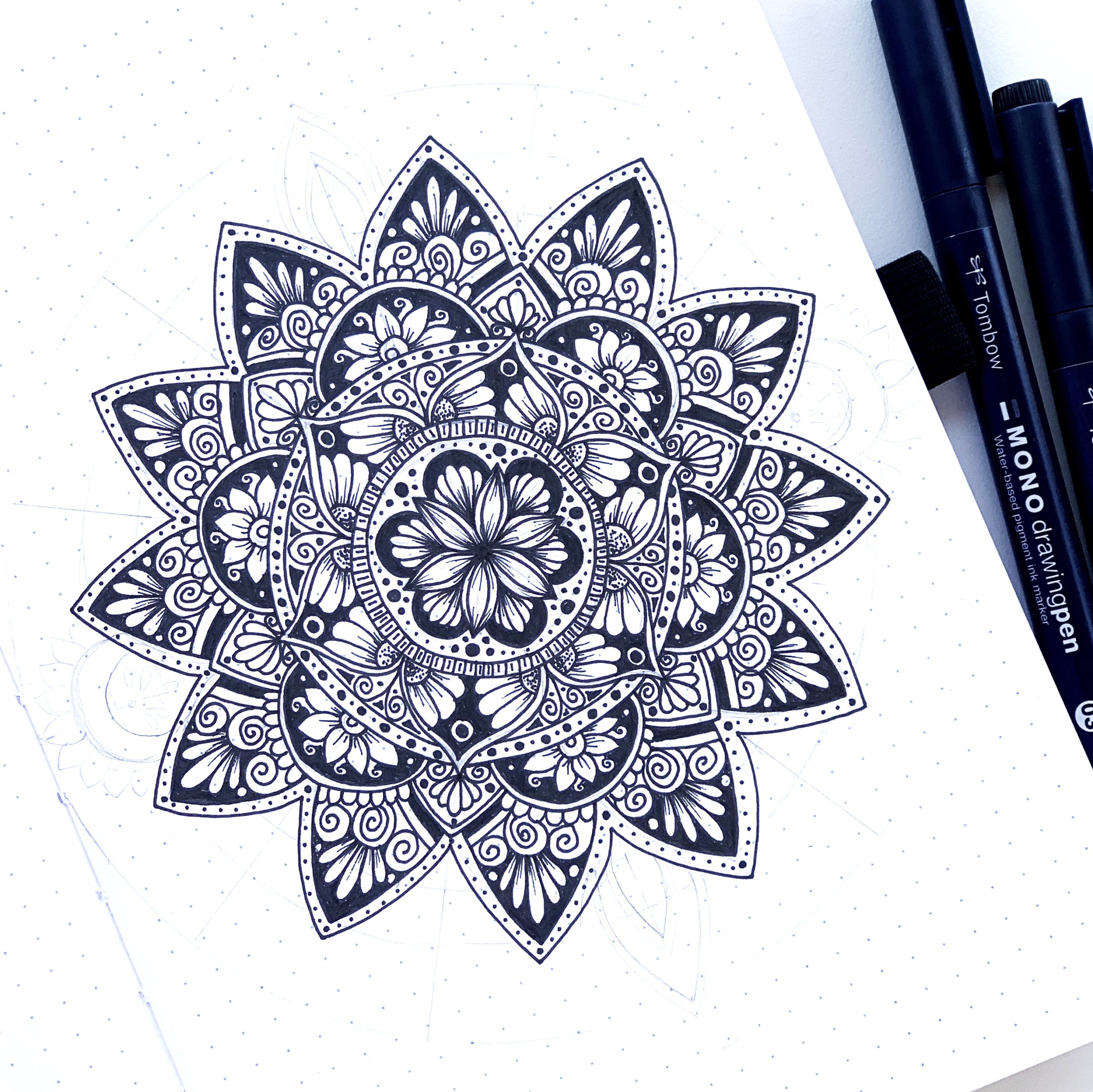
Step 6: Erasing Guidelines
After the ink has dried completely, gently erase the pencil guidelines to reveal a clean, intricate mandala.
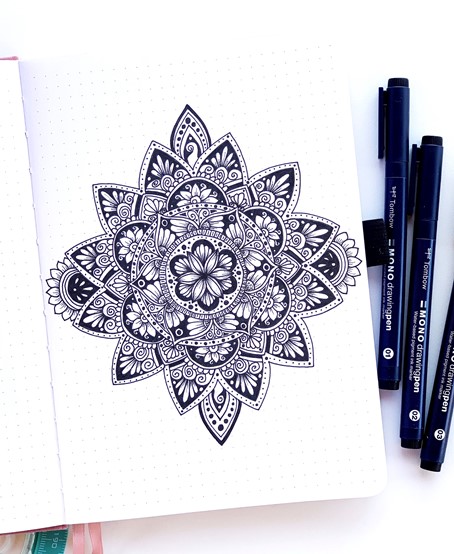
Tips for Successful Mandala Drawing
- Practice Regularly: Like any art form, regular practice enhances skill and creativity.
- Experiment with Patterns: Don’t hesitate to try new shapes and designs to develop your unique style.
- Use Quality Materials: Investing in good-quality paper and pens can significantly affect the outcome of your artwork.
- Stay Patient: Intricate designs take time. Embrace the process and enjoy the meditative journey of creating your mandala.
The Meditative Benefits of Mandala Drawing
Beyond being a form of creative expression, mandala art has been used for centuries to aid in meditation, relaxation, and self-discovery. The repetitive patterns and symmetry help to:
- Reduce stress and anxiety
- Improve concentration and patience
- Enhance mindfulness and emotional balance
- Stimulate brain function and creativity
Engaging in mandala drawing allows the mind to enter a flow state, fostering peace and inner clarity.
Embarking on the practice of mandala drawing opens a pathway to both creative expression and personal tranquility. By following this comprehensive guide, beginners can develop the skills needed to create intricate and meaningful mandalas. Remember, each mandala you create is a reflection of your inner self, offering a unique opportunity for self-exploration and artistic fulfillment.
For further inspiration and tutorials, consider exploring additional resources:
Thanks so much for visiting today! I hope you found this post on how to draw mandalas helpful and you give it a try! For more inspiration like this, make sure to follow @studio80design!
Very helpful for beginner
http://www.penkraftonline.in/LivePenMandala
Pingback: What is Mandala art therapy? – nikitasaha
Thanks!
Hi Adrienne,
This is such a great place to share all that we know. In fact, this information about mandala art and the information “Helix 360 Degree Angle and Circle Maker” is quite commendable. I am lazy, so I just use a compass and keep at it. However, now on I will try to use these tools as well.
Thanks,
Stella.
U rock 🌹🌹🌹🌹🌹
That was a beautiful article and very well explained.
I like it.
A mandala is a symbol of the universe in its ideal form, and its creation signifies the transformation of a universe of suffering into one of joy.
Very well explained! These mandala designs are so beautiful😍
Was a great help for us beginners.,.
nice
The results are ideal, thanks for the advice and the detail of the steps.
Your blog os so beautiful. I love reading and we have an amazing website that provides different mandala art.
good
Great guide! Drawing mandalas can be a calming and meditative practice.
Pingback: Creating Mandalas: A Guide to Sacred Art